
Cotopaxi National Park: The Majestic Andean Wilderness
Discover the breathtaking beauty of Cotopaxi National Park, home to one of the world's highest active volcanoes and a haven for outdoor enthusiasts.
Cotopaxi National Park, located in the heart of Ecuador, is a paradise for nature lovers and adventure seekers. The park is home to Cotopaxi Volcano, one of the highest active volcanoes in the world. Its snow-capped peak, standing at 5,897 meters (19,347 feet), is an awe-inspiring sight and a major draw for climbers and hikers. The park's diverse landscapes include lush forests, pristine lakes, and vast plains, offering visitors a stunning array of natural beauty. Wildlife enthusiasts will be thrilled by the park's rich biodiversity. You can spot Andean condors soaring above, wild horses grazing in the meadows, and even the elusive Andean fox. The park is also home to several archaeological sites, providing a glimpse into the region's ancient cultures. Whether you’re an avid hiker, a bird watcher, or simply looking to immerse yourself in nature, Cotopaxi National Park offers something for everyone. The park is easily accessible from Quito, Ecuador's capital, making it a convenient day trip or weekend getaway. Visitors can explore the park through guided tours or on their own. The park's well-maintained trails and visitor facilities ensure a comfortable and memorable experience. Remember to dress in layers, as the weather can change rapidly, and bring plenty of water and snacks for your adventure.
Local tips in Cotopaxi National Park
- Arrive early in the morning to catch clear views of the Cotopaxi Volcano before the clouds roll in.
- Bring warm clothing, as temperatures can drop significantly, especially at higher altitudes.
- Consider hiring a local guide for a more informative and safer hiking experience.
- Pack plenty of water and high-energy snacks for your trek.
- Check weather conditions before your visit, as the park may close due to volcanic activity.
- Visit the Limpiopungo Lagoon for a scenic spot perfect for bird watching and photography.
Cotopaxi National Park: The Majestic Andean Wilderness
Cotopaxi National Park, located in the heart of Ecuador, is a paradise for nature lovers and adventure seekers. The park is home to Cotopaxi Volcano, one of the highest active volcanoes in the world. Its snow-capped peak, standing at 5,897 meters (19,347 feet), is an awe-inspiring sight and a major draw for climbers and hikers. The park's diverse landscapes include lush forests, pristine lakes, and vast plains, offering visitors a stunning array of natural beauty. Wildlife enthusiasts will be thrilled by the park's rich biodiversity. You can spot Andean condors soaring above, wild horses grazing in the meadows, and even the elusive Andean fox. The park is also home to several archaeological sites, providing a glimpse into the region's ancient cultures. Whether you’re an avid hiker, a bird watcher, or simply looking to immerse yourself in nature, Cotopaxi National Park offers something for everyone. The park is easily accessible from Quito, Ecuador's capital, making it a convenient day trip or weekend getaway. Visitors can explore the park through guided tours or on their own. The park's well-maintained trails and visitor facilities ensure a comfortable and memorable experience. Remember to dress in layers, as the weather can change rapidly, and bring plenty of water and snacks for your adventure.
When is the best time to go to Cotopaxi National Park?
Iconic landmarks you can’t miss
Cotopaxi- Administration National Park
Explore the stunning landscapes and vibrant ecosystems of Cotopaxi National Park, home to one of the world's highest active volcanoes.
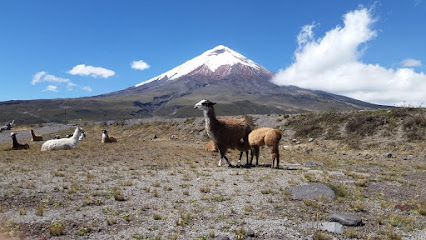
Parque Nacional Cotopaxi
Experience the breathtaking landscapes and rich biodiversity of Parque Nacional Cotopaxi, a must-visit national park in Ecuador.

Reserva Ecológica Los Illinizas
Explore the breathtaking landscapes and rich biodiversity of Reserva Ecológica Los Illinizas, a must-visit natural gem in Ecuador.

Toachi River Canyon
Discover breathtaking views and adventure at Toachi River Canyon, a natural wonder in the heart of Ecuador, perfect for nature lovers and thrill-seekers.

Mirador Cotopaxi
Experience breathtaking views of Cotopaxi volcano at Mirador Cotopaxi, a serene observation deck in Quito, perfect for nature lovers and photographers.
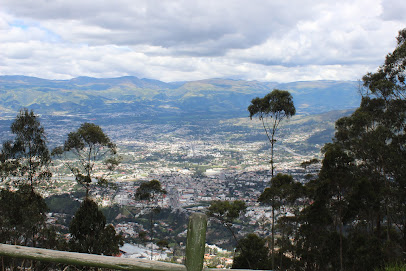
Mirador de Cristal Shalalá
Experience breathtaking panoramic views and natural beauty at Mirador de Cristal Shalalá, a must-visit attraction in Malingua Pamba, Ecuador.

Cotopaxi Visitors Center
Discover the rich heritage and stunning landscapes surrounding Cotopaxi at the Visitors Center, your gateway to Ecuador's breathtaking national park.

Volcan Cotopaxi
Experience the breathtaking beauty and adventure of Volcan Cotopaxi, one of the highest active volcanoes in the world, nestled in Ecuador's stunning national park.
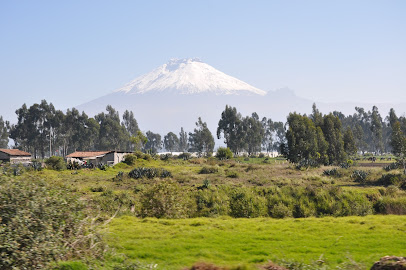
Mirador Chinalo Bajo
Experience the stunning landscapes and rich biodiversity of Mirador Chinalo Bajo, a must-visit wildlife park in Chugchilán, Ecuador.

Morurco
Experience the breathtaking landscapes and rich culture of Morurco, a top tourist attraction in Tanicuchí, Ecuador.

Unmissable attractions to see
Condor Machay Cascadas
Explore the breathtaking Condor Machay Cascadas, a nature preserve near Quito filled with stunning waterfalls, diverse wildlife, and lush landscapes.

Cotopaxi Visitors Center
Explore the Cotopaxi Visitors Center in Ecuador, where breathtaking landscapes and rich biodiversity await every traveler seeking nature's wonders.

laguna Santo Domingo
Discover the serene beauty of Laguna Santo Domingo, a breathtaking lagoon in Ecuador surrounded by lush nature and vibrant wildlife, perfect for peaceful retreats.

El Manantial
Discover the serene beauty of El Manantial, a stunning tourist attraction in El Mudadero, Ecuador, perfect for nature enthusiasts and explorers alike.

Paso del Inca
Discover Paso del Inca, a breathtaking tourist attraction in Machachi, Ecuador, where stunning landscapes meet rich cultural history in the Andes.
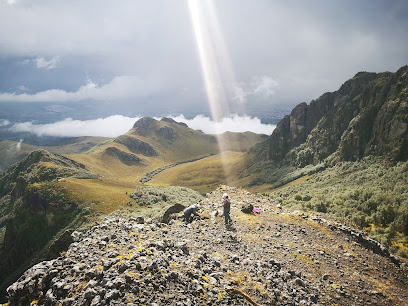
Cotopark
Explore the breathtaking landscapes and rich biodiversity of Cotopark, a premier tourist attraction in Tanicuchi, Ecuador, perfect for nature lovers and adventure seekers.

Cerro el Morro
Experience the breathtaking beauty of Cerro el Morro in Ecuador, an essential destination for nature lovers and adventure seekers alike.

Morurco
Explore Morurco, a breathtaking tourist attraction in Tanicuchí, Ecuador, where stunning views and rich culture await every traveler.
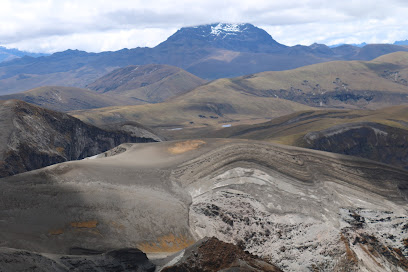
Hacienda El Valle
Experience the beauty and culture of Ecuador at Hacienda El Valle, a perfect blend of nature, history, and authentic culinary delights.

laguna de Cajas
Explore the breathtaking Laguna de Cajas, a serene lake in Ecuador's Andean highlands, perfect for hiking, birdwatching, and experiencing local culture.

Mountain Climbing Ecuador
Experience the thrill of mountain climbing amidst the breathtaking landscapes of Ecuador's Andes, perfect for adventurers and nature lovers alike.

Climb Cotopaxi Ecuador
Experience the thrill of climbing Cotopaxi, Ecuador's iconic active volcano, and witness breathtaking landscapes and rich biodiversity.

Cañón Rojo
Explore the breathtaking beauty of Cañón Rojo, a stunning natural wonder in Cotopaxi, Ecuador, perfect for adventure seekers and nature lovers.

Essential places to dine
Mirador De Los Volcanes Cotopaxi-Ecuador
Experience exquisite Ecuadorian cuisine with breathtaking views at Mirador De Los Volcanes in Cotopaxi.

Chasqui Mirador Cotopaxi
Discover Chasqui Mirador Cotopaxi: Enjoy authentic Ecuadorian cuisine with breathtaking views near Cotopaxi National Park.

Cuscungo Restaurante
Experience authentic Ecuadorian cuisine at Cuscungo Restaurante near Cotopaxi – where local flavors meet breathtaking views.

Cotopaxi CaraSur. Refugio
Discover authentic Ecuadorian cuisine at Cotopaxi CaraSur while enjoying breathtaking views near Cotopaxi National Park.

Los Nevados restaurante
Discover authentic Ecuadorian cuisine at Los Nevados in Latacunga – a must-visit for every food lover exploring Ecuador.

Markets, malls and hidden boutiques
Cotopaxi- Administration National Park
Experience the breathtaking landscapes and rich biodiversity of Cotopaxi National Park, home to the iconic Cotopaxi volcano and stunning Andean wildlife.

Parque Nacional Cotopaxi
Experience the breathtaking beauty and adventure of Cotopaxi National Park, Ecuador's iconic natural treasure.

The Secret Garden Cotopaxi
Experience the serene beauty of Cotopaxi at The Secret Garden, a charming hostel offering adventure, comfort, and local culture in Ecuador.

Aglomerados Cotopaxi S.A
Explore Aglomerados Cotopaxi S.A., where Ecuador's rich lumber heritage meets sustainable craftsmanship in a picturesque setting.

Cotopaxi Visitors Center
Discover the ecological and cultural treasures of Cotopaxi at the Visitors Center, your gateway to Ecuador's stunning volcano landscapes.

Volcan Cotopaxi
Discover the breathtaking beauty and adventure of Volcan Cotopaxi, a must-see national park in Ecuador's stunning Andes mountains.

Caspi Parque Nacional Cotopaxi
Discover the breathtaking landscapes and thrilling adventures at Caspi Parque Nacional Cotopaxi, home to the majestic Cotopaxi volcano.

Floranation
Explore the vibrant flavors of Ecuador at Floranation, Saquisilí's beloved grocery store, offering fresh produce and local delicacies.

Nik Center
Discover the vibrant Nik Center in Saquisilí, Ecuador, your go-to destination for traditional handicrafts and modern essentials.
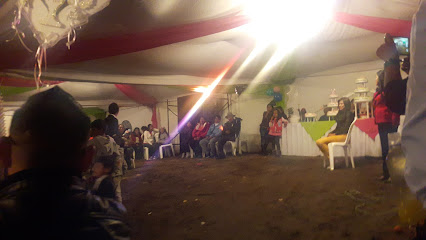
CUPIDO
Explore the enchanting CUPIDO in Latacunga, where unique gifts and exquisite floral arrangements await to brighten your day.

Morurco
Discover the mesmerizing beauty and rich culture of Morurco in Tanicuchí, a premier tourist attraction in Ecuador's stunning Andes.

Kaleth Boutique
Explore Kaleth Boutique in Machachi for exquisite men's formal wear and elegant dresses, blending local craftsmanship with modern fashion trends.

Calzado Gaby Style
Discover stylish women's footwear and formal wear at Calzado Gaby Style, the premier outlet store in Machachi, Ecuador.

vicky fashion line
Explore the vibrant styles of Vicky Fashion Line in Machachi, where local fashion meets trendy designs for an unforgettable shopping experience.

DOLCE AMORE
Discover unique Ecuadorian handicrafts at Dolce Amore, a charming gift shop in Latacunga offering a range of artisanal souvenirs.

Essential bars & hidden hideouts
The Secret Garden Cotopaxi
Experience the beauty of Ecuador at The Secret Garden Cotopaxi, your gateway to adventure and tranquility in the heart of nature.

Mirador De Los Volcanes Cotopaxi-Ecuador
Savor authentic Ecuadorian cuisine with breathtaking views of Cotopaxi at Mirador De Los Volcanes, a culinary gem in Latacunga.

Rondador Cotopaxi
Discover culinary delights and thrilling adventures at Rondador Cotopaxi, your gateway to the breathtaking landscapes of Cotopaxi National Park.

Terraza Resto Bar
Experience the vibrant atmosphere and diverse culinary offerings at Terraza Resto Bar in Latacunga, where every meal is a celebration.
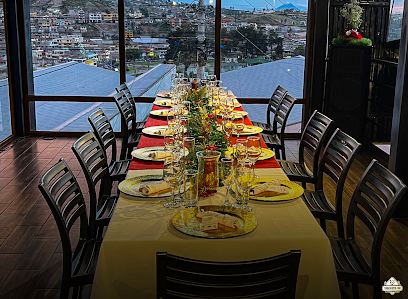
Hacienda San Agustin de Callo
Experience the enchanting blend of history, culture, and adventure at Hacienda San Agustin de Callo, a unique destination in Ecuador.

Zona cero disco bar
Discover the Thrilling Atmosphere of Zona Cero Disco Bar - A Nightlife Gem in the Heart of the City!

Hotel Cuello de Luna - Cotopaxi
Experience the charm of Hotel Cuello de Luna in Cotopaxi, where comfort meets adventure amidst stunning Ecuadorian landscapes.

Quilotoa loop
Explore the stunning landscapes and rich culture of Ecuador on the breathtaking Quilotoa Loop, a trek like no other in the Andes.
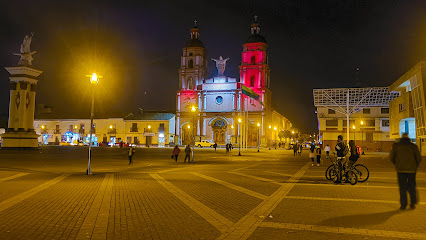
Cotopaxi Drinks
Experience the essence of Ecuador at Cotopaxi Drinks, a charming cafeteria offering local beverages and a cozy atmosphere in the heart of the country.

La Casona del Pacho
Discover the lively spirit of Latacunga at La Casona del Pacho, a vibrant bar perfect for unwinding with drinks and local culture.

EL REFUGIÓ BAR KARAOKE
Experience the vibrant nightlife of Latacunga at El Refugio Bar Karaoke, where music, food, and fun come together in a lively atmosphere.

Arkadia
Discover Arkadia, a vibrant bar offering creative cocktails and a lively atmosphere in the heart of the city, perfect for unwinding and socializing.

Bar Karaoke La Cocha
Experience the vibrant nightlife at Bar Karaoke La Cocha in Latacunga, where every night is filled with music, fun, and unforgettable moments.

White Rabbit Restaurant Bar
Discover the vibrant flavors of Ecuador and beyond at White Rabbit Restaurant Bar, a culinary jewel in the heart of Latacunga.

Papu's BAR
Discover the vibrant atmosphere of Papu's BAR in Latacunga, where local culture meets refreshing drinks and friendly faces.

Local Phrases about Cotopaxi National Park
-
- Hello¡Hola!
[O-lah] - Goodbye¡Adiós!
[Ah-dee-ohs] - YesSí
[See] - NoNo
[Noh] - Please/You're welcomePor favor/De nada
[Por fah-vor/De nah-dah] - Thank youGracias
[Grah-see-ahs] - Excuse me/SorryDisculpe/Perdón
[Dees-cool-peh/Pehr-dohn] - How are you?¿Cómo estás?
[Koh-moh ehs-tahs] - Fine. And you?Bien. ¿Y tú?
[Bee-ehn. Ee too] - Do you speak English?¿Hablas inglés?
[Ah-blahs een-glehs] - I don't understandNo entiendo
[Noh ehn-tee-ehn-doh]
- Hello¡Hola!
-
- I'd like to see the menu, pleaseMe gustaría ver el menú, por favor
[Meh goo-stah-ree-ah behr ehl meh-noo, poor fah-vor] - I don't eat meatNo como carne
[Noh koh-moh kahr-neh] - Cheers!¡Salud!
[Sah-lood] - I would like to pay, pleaseMe gustaría pagar, por favor
[Meh goo-stah-ree-ah pah-gahr, poor fah-vor]
- I'd like to see the menu, pleaseMe gustaría ver el menú, por favor
-
- Help!¡Ayuda!
[Ah-yoo-dah] - Go away!¡Vete!
[Beh-teh] - Call the Police!¡Llama a la Policía!
[Yah-mah ah lah Poh-lee-see-ah] - Call a doctor!¡Llama a un doctor!
[Yah-mah ah oon dohk-tohr] - I'm lostEstoy perdido
[Ehs-toy pehr-dee-doh] - I'm illEstoy enfermo
[Ehs-toy ehn-fehr-moh]
- Help!¡Ayuda!
-
- I'd like to buy...Me gustaría comprar...
[Meh goo-stah-ree-ah kohm-prahr...] - I'm just lookingSolo estoy mirando
[Soh-loh ehs-toy mee-rahn-doh] - How much is it?¿Cuánto cuesta?
[Kwan-to kweh-stah] - That's too expensiveEsto es demasiado caro
[Ehs-toh ehs deh-mah-syah-doh kah-roh] - Can you lower the price?¿Puede bajar el precio?
[Pweh-deh bah-har ehl preh-syoh]
- I'd like to buy...Me gustaría comprar...
-
- What time is it?¿Qué hora es?
[Keh oh-rah ehs] - It's one o'clockEs la una
[Ehs lah oo-nah] - Half past (10)Diez y media
[Dyehs ee meh-dee-ah] - MorningMañana
[Mah-nyah-nah] - AfternoonTarde
[Tahr-deh] - EveningNoche
[Noh-cheh] - YesterdayAyer
[Ah-yehr] - TodayHoy
[Oy] - TomorrowMañana
[Mah-nyah-nah] - 1Uno
[Oo-noh] - 2Dos
[Dohs] - 3Tres
[Tres] - 4Cuatro
[Kwah-troh] - 5Cinco
[Seen-koh] - 6Seis
[Says] - 7Siete
[Syeh-teh] - 8Ocho
[Oh-choh] - 9Nueve
[Nweh-veh] - 10Diez
[Dyehs]
- What time is it?¿Qué hora es?
-
- Where's a/the...?¿Dónde está...?
[Dohn-deh ehs-tah] - What's the address?¿Cuál es la dirección?
[Kwahl ehs lah dee-rehk-syohn] - Can you show me (on the map)?¿Puedes mostrarme (en el mapa)?
[Pweh-dehs mohs-trar-meh (ehn ehl mah-pah)] - When's the next (bus)?¿Cuándo es el próximo (bus)?
[Kwan-doh ehs ehl proh-ksee-moh (boos)] - A ticket (to ....)Un boleto (a ...)
[Oon boh-leh-toh (ah ...)]
- Where's a/the...?¿Dónde está...?
History of Cotopaxi National Park
-
Long before the arrival of the Spanish, the area now known as Cotopaxi National Park was inhabited by various indigenous groups, such as the Panzaleo people. These groups held the Cotopaxi volcano in high spiritual regard, believing it to be a sacred entity. The volcano played a significant role in their cosmology and rituals, and numerous archaeological sites around the park indicate the long-standing human connection to this dramatic landscape.
-
With the arrival of the Spanish in the 16th century, the Cotopaxi region was mapped and explored by European settlers. The first recorded ascent of Cotopaxi was attempted by the German explorer Wilhelm Reiss and Colombian geologist Angel Escobar in 1872. Though they did not reach the summit, their efforts marked the beginning of modern exploration of the region. Subsequent expeditions successfully summited the volcano, drawing international attention to its formidable beauty.
-
Cotopaxi is one of the world's most active volcanoes, with more than 50 eruptions since 1738. Notable eruptions occurred in 1744, 1768, and 1877, each causing significant damage to nearby settlements and altering the landscape. The 1877 eruption was particularly catastrophic, as it caused lahars (volcanic mudflows) that traveled as far as the Pacific Ocean, devastating everything in their path. These events have deeply influenced local culture and folklore, underscoring the volcano's dual role as a life-giver and destroyer.
-
Cotopaxi National Park was officially established in 1975 as part of Ecuador's efforts to preserve its unique natural heritage. The park encompasses approximately 33,393 hectares and includes not only the Cotopaxi volcano but also diverse ecosystems ranging from montane forests to high-altitude paramo. The park's creation marked a significant step in conservation, aimed at protecting the area's flora and fauna, including species like the Andean condor and the spectacled bear.
-
Today, Cotopaxi National Park is a symbol of Ecuador's natural beauty and cultural heritage. The park attracts thousands of visitors annually, offering a range of activities such as hiking, bird-watching, and mountaineering. Local communities continue to engage with the park, blending traditional practices with modern tourism. The park also serves as an important research site for scientists studying volcanic activity, climate change, and biodiversity. Its ongoing significance is a testament to the enduring relationship between humans and this awe-inspiring landscape.
Cotopaxi National Park Essentials
-
Cotopaxi National Park is located approximately 50 kilometers south of Quito, the capital of Ecuador. The nearest major airport is Mariscal Sucre International Airport in Quito. From Quito, you can reach the park by car, taxi, or organized tour. The drive typically takes about 1.5 to 2 hours via the Pan-American Highway. Public buses also run from Quito to the towns of Machachi and Latacunga, which are close to the park's entrance.
-
Once at Cotopaxi National Park, you can explore the area by car, bicycle, or on foot. Renting a car can be a convenient option for more flexibility, but keep in mind that some roads within the park are unpaved and may require a 4x4 vehicle. Bicycles are available for rent at various locations, and guided tours often include transportation within the park. Local taxis and buses can also be used to navigate the surrounding towns and villages.
-
The official currency in Ecuador is the US Dollar (USD). Credit cards are accepted in most hotels, restaurants, and shops in the nearby towns, but it is advisable to carry cash for entrance fees, local markets, and smaller establishments. ATMs are available in Machachi and Latacunga, but it is wise to withdraw sufficient cash before entering the park.
-
Cotopaxi National Park is generally a safe destination for tourists. However, it is important to take standard precautions. Avoid walking alone at night in unfamiliar areas and keep an eye on your belongings in crowded places. While the park itself is safe, the nearby city of Latacunga has some areas with higher crime rates targeting tourists. Stay vigilant and avoid displaying valuables.
-
In case of emergency, dial 911 for immediate assistance. The park has ranger stations equipped to handle minor emergencies. For medical emergencies, the nearest hospitals are located in Latacunga and Quito. It is recommended to have travel insurance that covers medical emergencies. Always carry a first aid kit and be aware of the symptoms of altitude sickness, as the park's elevation can affect some visitors.
-
Fashion: Do dress in layers and wear appropriate clothing for hiking and changing weather conditions. Avoid wearing flashy or revealing clothing. Religion: Do respect local customs and traditions, especially in nearby towns where religious practices are important. Public Transport: Do be respectful and give up your seat to elderly passengers. Don't eat or drink on public transport. Greetings: Do greet people with a handshake or a simple 'Buenos días' (Good morning). Eating & Drinking: Do try local delicacies and accept food offerings graciously. Don't refuse hospitality, as it is considered impolite.
-
To experience Cotopaxi National Park like a local, consider visiting during weekdays to avoid the weekend crowds. Engage with park rangers and local guides, as they can offer unique insights into the park's natural history and wildlife. Don't miss the opportunity to hike to the José Rivas Refuge, which offers stunning views of the Cotopaxi volcano. For a unique experience, visit the indigenous markets in Saquisilí and Pujilí, where you can buy traditional crafts and fresh produce.
Nearby Cities to Cotopaxi National Park
-
Things To Do in Ambato
-
Things To Do in Tena
-
Things To Do in Mindo
-
Things To Do in Otavalo
-
Things To Do in Ibarra
-
Things To Do in Macas
-
Things To Do in Guayaquil
-
Things To Do in Pasto
-
Things To Do in Cuenca
-
Things To Do in Manta
-
Things To Do in Salinas
-
Things To Do in Loja
-
Things To Do in Popayán
-
Things To Do in Cali
-
Things To Do in Neiva








